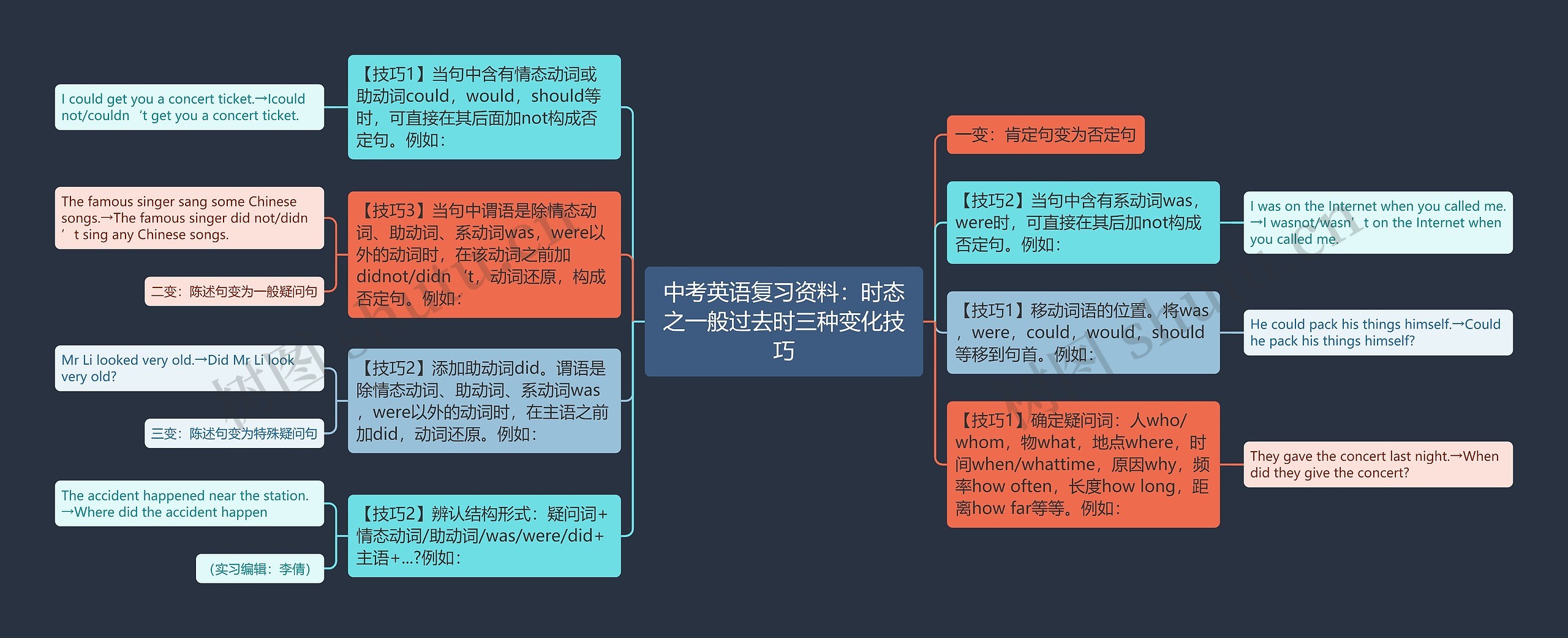【技巧1】当句中含有情态动词或助动词could,would,should等时,可直接在其后面加not构成否定句。例如:
I could get you a concert ticket.→Icould not/couldn‘t get you a concert ticket.
【技巧2】当句中含有系动词was,were时,可直接在其后加not构成否定句。例如:
I was on the Internet when you called me.→I wasnot/wasn’t on the Internet when you called me.
【技巧3】当句中谓语是除情态动词、助动词、系动词was,were以外的动词时,在该动词之前加didnot/didn‘t,动词还原,构成否定句。例如:
The famous singer sang some Chinese songs.→The famous singer did not/didn’t sing any Chinese songs.
【技巧1】移动词语的位置。将was,were,could,would,should等移到句首。例如:
He could pack his things himself.→Could he pack his things himself?
【技巧2】添加助动词did。谓语是除情态动词、助动词、系动词was,were以外的动词时,在主语之前加did,动词还原。例如:
Mr Li looked very old.→Did Mr Li look very old?
【技巧1】确定疑问词:人who/whom,物what,地点where,时间when/whattime,原因why,频率how often,长度how long,距离how far等等。例如:
They gave the concert last night.→When did they give the concert?
【技巧2】辨认结构形式:疑问词+情态动词/助动词/was/were/did+主语+...?例如:
The accident happened near the station.→Where did the accident happen

